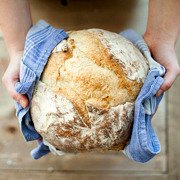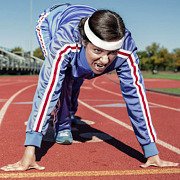AI models, virtual dates, and sweatpants – Sales Lead Digest
Wow. Things keep changing and they’re changing fast! This week we’re reading about the changes in customers and how one company is dealing with it. We’re digging into the history of the office because, hey, how did we end up here? We’re thinking about our responsibility as marketers and sellers to find the right fit for our products, and we’re learning more about what happens when we exercise. Now, if I can just stay out of the fridge for the next hour. . .
Inside the Flour Company Supplying America’s Sudden Baking Obsession
“The hotline has been handling calls at twice the normal rate, taking some 11,000 calls in April, mostly from baking newbies. “People are chatty,” says Ely. “I get the sense some of them are pretty lonely.” Email from consumers has quadrupled and combined with questions that come in over social media the company fielded 50,000 questions in April — about half of them asking where to find flour.”
Businesses are changing and we know it because we’re in the middle of it, right? We experience it every day. Our customers are changing too. Many of these changes will be for good and as marketers we need to be on top of them. We need to know what changes, to what extent it changes, and how to communicate it. King Arthur Flour represents the kind of response we should aim for. New products, new services, and new opportunities
Death of the office
“Despite the commute and the colleagues, the sitting and the stale meetings, offices bring many of us something else too: joy. Lucy Kellaway, who wrote a long-running column in the Financial Times on the absurdities of office life, talks of the ‘great artificiality’ we embrace the moment that we step into an office. ‘We pretend that our clothes are always in order and that we are entirely professional and impersonal. Whereas probably in our heads and definitely in our homes there is an awful lot of unravelling and farting going on.'”
I’m finding a lot of joy from reading articles like this one explaining how we all ended up in offices anyway. There has to be some benefit, right? How do we quantify it and can it be replicated in the time of social distancing? I suspect industrial design teams and corporate culture wonks will be studying this for decades. I enjoyed the tiny history lesson.
Microsoft Won’t Sell Facial Recognition To American Cops After Protests
“During a Washington Post event on Thursday, Microsoft president Brad Smith announced it would be joining its rivals in putting a moratorium on sales of facial recognition to law enforcement.
‘We will not sell facial recognition technology to police departments in the United States until we have a national law in place, grounded in human rights, that will govern this technology,’ Smith said. ‘The bottom line for us is to protect the human rights of people as this technology is deployed.’
Just because a customer wants to buy something you sell, should you sell it to them? It’s not a question our organization has to deal with on a moral level like these facial recognition companies, but it’s good to think about. Not all customers are going to be right for our companies and cultures but we don’t make the time to think about it. If you’re a regular reader you’ve seen me bring up taking time out to sit and think. This is one of the topics we can think about.
 A Single Session of Exercise Alters 9,815 Molecules in Our Blood
A Single Session of Exercise Alters 9,815 Molecules in Our Blood
READ MORE






